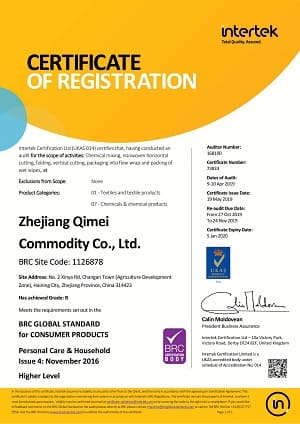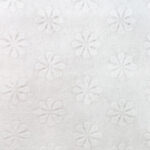Spunlace onwoven Fabric Type: Polyester,Poly -Viscose Blend material, Bamboo Fiber, Wood Pulp(Flushable), Cotton or Soy Fiber(Biodegradable)
Flat or Textured( Your Own LOGO is available)
Grammage: 30-80gsm
1/10/30/80/100/120/160 pcs/pack
The most common size of Waterproof makeup wipes around from 6 to 8 inches (15 to 20 cm) in width and length. This size is convenient for single-use and provides enough surface area to clean and freshen the external genital area. However, some intimate wipes may be smaller or larger than this standard size to cater to specific preferences or needs of consumers.
1. Plastic resealable bag: This is the most common type of wet wipe packaging. It is made of plastic and has a resealable strip on top to keep the wipes fresh and moist.
2. Flip-top lid container: This type of packaging consists of a plastic container with a flip-top lid that can be opened and closed to access the wipes.
3. Soft pack with plastic flip-top lid: Similar to the flip-top lid container, this packaging comes in a soft pack and has a plastic flip-top lid for easy access.
4. Pop-up dispenser: This type of packaging features a pop-up dispensing mechanism that pulls out one wipe at a time.
5. Travel pack: A small packaging designed for on-the-go use, it often comes with a plastic snap closure.
6. Single-use packaging: These wet wipes come in small, sealed packets which are convenient for travel or outdoor activities.
7. Refill bag: This larger size packaging is designed to refill other wet wipe containers, and usually has a resealable opening.
Water: Water is typically the main ingredient in makeup wipes, as it provides the base for the solution that is used to clean the skin.
Surfactants: Surfactants are used to break down and dissolve makeup, allowing it to be wiped away. Common surfactants used in makeup wipes include cocamidopropyl betaine, decyl glucoside, and polysorbate 20.
Emollients: Emollients are used to moisturize and soothe the skin, preventing it from drying out. Common emollients used in makeup wipes include glycerin, aloe vera, and panthenol.
Preservatives: Preservatives may be added to makeup wipes to prevent bacterial growth and prolong the shelf life of the product. Common preservatives used in cosmetic products include phenoxyethanol, methylparaben, and propylparaben.
Fragrance: Fragrance may be added to makeup wipes to give them a pleasant scent. However, some people may be sensitive to fragrances and may prefer fragrance-free products.
Other ingredients: Other ingredients that may be included in the formulation of makeup wipes include antioxidants, anti-irritants, and skin-conditioning agents.
Good Manufacturing Practices (GMP): GMP is a set of guidelines and standards that ensure the quality and safety of products. It covers all aspects of the manufacturing process, including the facilities, equipment, personnel, and documentation. Manufacturers of makeup wipes may need to adhere to GMP standards to ensure that their products are safe and effective.
ISO 22716: ISO 22716 is a standard for the production, control, storage, and shipment of cosmetic products. This standard covers all aspects of the manufacturing process, including personnel, facilities, and documentation. Compliance with this standard can help ensure that the manufacturer is producing safe and high-quality products.
FDA Regulations: If the manufacturer is selling their products in the United States, they will need to comply with the regulations set forth by the U.S. Food and Drug Administration (FDA). The FDA regulates cosmetics under the Federal Food, Drug, and Cosmetic Act (FD&C Act) and requires manufacturers to ensure the safety of their products through proper testing and labeling.
Cruelty-Free Certification: Some consumers may prefer to purchase makeup wipes that have not been tested on animals. A manufacturer may choose to obtain a cruelty-free certification from a third-party organization to demonstrate that their products are not tested on animals.
Vegan Certification: Similarly, some consumers may prefer to purchase makeup wipes that are free from animal-derived ingredients. A manufacturer may choose to obtain a vegan certification to demonstrate that their products are free from animal products.












